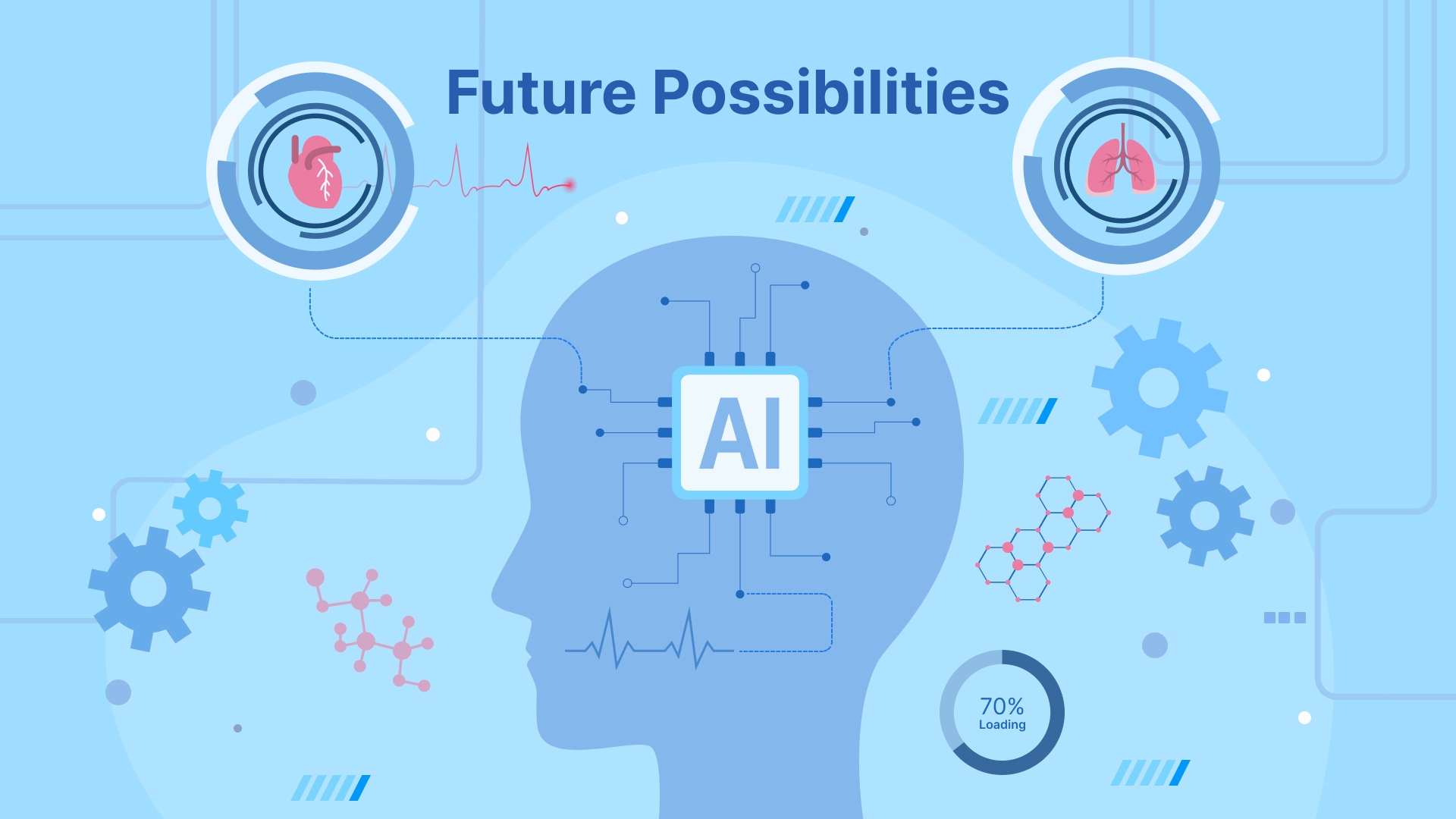

How AI is Reshaping the Medical Imaging Business
In the realm of modern healthcare, the significance of medical imaging cannot be overstated. Its invaluable contribution lies in the provision of profound insights into the intricate workings of the human body, enabling healthcare professionals to make accurate diagnoses and formulate effective treatment plans. The field of medical imaging has continuously advanced over the years, primarily driven by technological innovations. However, the true revolution has come with the advent of artificial intelligence (AI), which has completely transformed the way medical images are acquired, analyzed, and utilized.
AI, with its great algorithms and machine learning techniques, has unlocked immense potential in reshaping the landscape of medical imaging. It has paved the way for unprecedented efficiency, unrivaled accuracy, and enhanced patient outcomes. The integration of AI into medical imaging practices has ushered in a new era of precision and effectiveness, empowering healthcare professionals with a powerful ally in their quest to provide exceptional patient care.
Overview of AI in Medical Imaging
AI refers to the use of algorithms and machine-learning techniques to process and interpret medical images. It can learn patterns and features from extensive imaging data, empowering them to perform tasks such as image recognition, abnormality detection, and computer-aided diagnosis (CAD).
AI’s integration into the process has advanced steadily, with notable betterment in recent years. Initially, AI algorithms mostly assisted radiologists in disorder detection and investigation. However, as technology progressed, AI’s impact expanded to enclose all aspects of imaging, from acquisition to analysis, providing comprehensive clinical decision support.
AI is being applied across various imaging modalities, including X-ray, computed tomography (CT), magnetic resonance imaging (MRI), and ultrasound. These modalities generate an immense volume of data, which AI algorithms can efficiently analyze and interpret, extracting meaningful information to aid in diagnosis and treatment planning.
Improved Image Acquisition
AI-assisted techniques in image acquisition leverage machine learning algorithms to optimize imaging parameters, image reconstruction, and noise reduction. They learn from extensive datasets and can automatically adjust imaging parameters to produce high-quality images. This not only reduces the need for manual adjustments but also minimizes the occurrence of errors or suboptimal image quality.
Moreover, AI algorithms can aid in real-time image recognition, facilitating faster image processing and reducing diagnosis time. This is especially valuable in emergencies where prompt diagnosis is crucial.
One noteworthy application of AI in image acquisition is observed in radiography. AI algorithms can analyze X-ray images in real-time, detecting positioning errors or technical issues, and providing immediate feedback to the technologist. This real-time feedback ensures that the image quality is adequate, thereby reducing the need for repeated imaging and minimizing patient discomfort.
Furthermore, AI plays a significant role in reducing radiation exposure during imaging procedures. By optimizing imaging parameters and minimizing unnecessary scans, AI algorithms contribute to a safer imaging environment, benefiting both patients and healthcare professionals.
Enhanced Image Analysis
The application of AI algorithms in image analysis has significantly improved diagnostic capabilities and patient care. One of its key advantages is its ability to detect subtle patterns and features that may be difficult for the human eye to identify. For instance, in radiology, AI algorithms can assist in detecting lung nodules on chest CT scans. They accurately identify and highlight potential anomalies, enabling radiologists to focus on suspicious areas and reducing the chances of overlooking important findings.
AI is also used to aid in the diagnosis of conditions like breast cancer. AI algorithms can analyze mammograms and assist radiologists in detecting and characterizing breast lesions. This collaborative approach, combining radiologists’ expertise with AI’s computational power, has shown promising results in improving diagnostic accuracy and reducing false-positive rates. Furthermore, AI algorithms can facilitate the quantification and analysis of imaging biomarkers, providing valuable insights for treatment planning and disease progression monitoring.
However, it is important to acknowledge the limitations of AI in image analysis. AI algorithms heavily rely on the quality and diversity of the training data they receive. Inadequate or biased training data can result in errors or inaccuracies in analysis. Nevertheless, the integration of AI in image analysis holds great promise for improving diagnostic accuracy, reducing interpretation time, and enhancing patient outcomes. The collaborative efforts between healthcare professionals and AI technologies have the potential to transform the field of medical imaging and set new standards for precision medicine.
AI-Powered Imaging Equipment & Devices
AI-integrated imaging equipment, such as MRI scanners and CT machines, can utilize AI algorithms to optimize image recognition, reduce artifacts, and improve image quality. They automatically adjust imaging parameters based on patient-specific factors, leading to improved diagnostic accuracy and reduced scanning time.
Furthermore, AI algorithms play a crucial role in enhancing image reconstruction and post-processing techniques. They efficiently reconstruct images from sparse or undersampled data, enabling faster image acquisition without compromising image quality. The field of ultrasound imaging is also experiencing a transformation through AI advancements.
Additionally, AI-powered imaging devices are being developed to provide real-time feedback and guidance during image acquisition. For instance, AI algorithms can analyze live ultrasound images and assist clinicians in positioning the probe correctly, ensuring optimal image quality and minimizing the need for repeat scans. By harnessing the power of AI, medical imaging technologies are becoming more intelligent, efficient, and user-friendly.
Ethical & Regulatory Considerations
The integration of AI in medical imaging raises important ethical and regulatory concerns that must be addressed to ensure responsible and safe implementation. Here are some adjustments to enhance clarity and readability:
Transparency: Healthcare professionals and patients must have access to information regarding the algorithms’ capabilities, limitations, and the data used for their training.
Accountability: Clear frameworks should be established to handle potential errors, biases, or adverse outcomes associated with AI algorithms.
Privacy and Data Security: Robust measures need to be implemented to protect sensitive medical information, comply with relevant regulations, and mitigate the risk of data breaches.
Bias: Addressing and mitigating bias in AI algorithms is essential. This can be achieved by ensuring diverse and representative training datasets and implementing rigorous testing and validation protocols.
Regulatory Frameworks: They should encompass issues such as algorithm and clinical validations, patient consent, and liability.
Continuous Monitoring and Evaluation: Regular assessment of algorithm performance, impact on patient outcomes, and feedback from healthcare professionals and patients is vital to identify and address any emerging issues.
By addressing these ethical and regulatory considerations, we can ensure that AI in medical imaging is implemented in a responsible, trustworthy, and patient-centric manner.
Future Possibilities

The future holds even more exciting possibilities for the impact of AI on patient care, research, and healthcare delivery. AI-powered personalized medicine has the potential to optimize patient outcomes, minimize adverse effects, and improve resource allocation.
Predictive analytics plays a vital role by leveraging AI to identify patterns and risk factors, enabling early intervention and preventive care. This empowers healthcare professionals to take proactive measures to improve patient health.
Another area where AI excels is radiomics and imaging biomarkers. AI algorithms can extract intricate details from medical images, including radiomics features and imaging biomarkers. These insights provide valuable information for disease characterization, prognosis, and treatment response.
Autonomous imaging is another significant development. It streamlines workflows, reduces human error, and improves efficiency. This allows healthcare professionals to focus on complex cases and provide better patient care.
Furthermore, AI can be integrated with other emerging technologies like robotics and augmented reality. This integration enhances surgical planning and guidance, image-guided interventions, and remote consultations.
Data sharing and collaboration are facilitated through AI-powered platforms. These platforms enable the sharing and collaboration of medical imaging data, which in turn allows healthcare professionals worldwide to learn from diverse cases and improve diagnostic accuracy.
As AI continues to evolve and expand its capabilities, the potential for its application in medical imaging is vast. However, it is crucial to address ethical, regulatory, and practical challenges to ensure the responsible integration of AI in healthcare.
Final Word
AI is transforming the medical imaging industry by enhancing image acquisition, improving analysis, providing clinical decision support, and powering advanced imaging equipment. The collaborative efforts between AI and healthcare professionals have the potential to revolutionize patient care, drive the advancement of precision medicine, and transform the field of medical imaging.
By embracing the potential of AI, addressing ethical considerations, and fostering interdisciplinary collaboration, we can unlock the full transformative power of AI in medical imaging. This will ultimately benefit patients and further advance the field of healthcare.
Faq
What is the role of AI in medical imaging?
+AI helps radiologists and healthcare professionals interpret medical images, such as X-rays, MRIs, and CT scans. Its algorithms can detect abnormalities, assist in early disease detection, and provide quantitative measurements for precise diagnosis. They can also aid in segmenting organs and tumors, guiding treatment planning, and monitoring illness progression.
How does AI enhance the accuracy of medical image analysis?
+AI algorithms can process and analyze large volumes of medical images with great speed, surpassing human capabilities. They can detect patterns, anomalies, and subtle details that may be missed by human observers. AI can also aid in automating routine tasks, such as image segmentation or measurement, reducing human error and increasing efficiency.
Can AI replace human radiologists in medical image interpretation?
+AI has the potential to assist human radiologists, but it is unlikely to completely replace them. AI algorithms can interpret large volumes of medical images quickly, flagging areas of concern for further review. This can help specialists improve accuracy and efficiency in diagnosis. However, human professionals bring critical thinking, clinical experience, and contextual knowledge that AI lacks.
What are the specific applications of AI in medical imaging?
+AI aids in the detection and diagnosis of various conditions, such as cancer, through automated analysis of images. AI algorithms can identify patterns and anomalies in medical scans, improving accuracy and efficiency. It also assists in radiology workflow optimization by automating tasks like image segmentation and organ detection. AI can be used for predicting disease progression to determine treatment plans.
Tell us about your project
Fill out the form or contact us

Tell us about your project
Thank you
Your submission is received and we will contact you soon
Follow us
